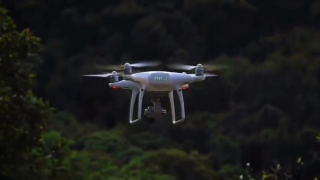By Yao Zeyu
Recently, the US House of Representatives passed the National Defense Authorization Act (NDAA) for Fiscal Year 2025. In terms of the budget size, the NDAA increased the defense spending cap to $895 billion, setting a new record high. In terms of the content, strategic competition with China and strengthening the "Indo-Pacific" alliance system are the two core focuses of the NDAA. The difference lies in that the former refers to the direction and objective, while the latter pertains to the means and methods.
China, mentioned for as many as 107 times,has once again become a "focal point" in the NDAA. Mike Rogers, Chairman of the House Armed Services Committee, openly declared that the NDAA would be “laser-focused” on countering the "China threat".
On the one hand, the NDAA outlined several measures to enhance the US conventional and nuclear capabilities, calling for increased investment in innovative technologies such as drones, artificial intelligence, quantum computing, and cyber security to meet the needs of future battlefields, with the aim of gaining a strategic advantage over China. On the other hand, it introduced a series of procurement and technology cooperation restrictions under the pretext of "data security," "agricultural security," and other concerns, targeting everything from laser radar and semiconductor equipment to "fresh or refrigerated garlic."
Six measures were proposed to consolidate the relationship between the US and its Asia-Pacific allies, upgrade the "Indo-Pacific" mini-lateral mechanism, and strengthen military presence and technological advantages in the "Indo-Pacific" region.
First, it confirmed the restructuring of the US military command in Japan into a "joint force headquarters," while accelerating the establishment of an integrated command network, the Indo-Pacific Command (INDOPACOM) Mission Network, which includes Japan, Australia, and other countries. Earlier, the US and Japan had pledged to upgrade their respective combat command systems and connect them to promote bilateral military integration. The NDAA requires the government to formulate a corresponding reorganization plan to accelerate the implementation of this process.
Second, amid the overall trend of relocating US forces from Okinawa to Guam and withdrawing from the first island chain, it confirmed that the size of the US military presence in the ROK will be maintained at 28,500 troops to further strengthen its commitment to extended deterrence for the ROK. In the context of political turbulence and rising unrest in the ROK triggered by the Martial Law Crisis, the NDAA will serve as a tranquilizer for the US-ROK alliance.
Third, it advocated to further advance trilateral cooperation between the US, Japan, and the ROK, requiring the US Department of Defense to submit a plan report on promoting trilateral security cooperation. For the first time, strengthening collaboration with Japan and the ROK to enhance strategic advantages over China was incorporated into the NDAA, making the China-focused strategy increasingly transparent.
Fourth, it encouraged to include countries like Japan in the Pillar II of the US, the UK and Australia (AUKUS) trilateral security partnership, and strengthen cooperation in advanced technologies such as hypersonic weapons and electronic warfare.
Fifth, it fully approved the budget for the Pacific Deterrence Initiative (PDI). This budget, which has surged from $2.1 billion in fiscal year 2021 to a staggering $9.9 billion, includes new programs such as the construction of nuclear-powered submarines, ballistic missile defense, and cyber warfare. The PDI budget significantly outpaces the budget for the European Deterrence Initiative (EDI), which is only $2.91 billion this year.
Sixth, it authorized the establishment of advanced manufacturing plants within or near military facilities of the US Indo-Pacific Command(USINDOPACOM) to support submarine, shipbuilding, and other defense industrial activities, aiming to expand the US defense industrial base in the "Indo-Pacific" region and strengthen the weapons supply chain. Furthermore, the NDAA also authorized the "Indo-Pacific Security Assistance Initiative" designed to provide defense materials and services to regional allies and partners.
The NDAA for fiscal year 2025 explicitly links the goals of the US "Indo-Pacific Strategy" with the strategic competition with China, perpetuating US' plot to create obstacles for China and slow its development in regions like the Taiwan Strait and the South China Sea. This time, the US House of Representatives endeavored to complete the legislative process for the NDAA before the government transition, with an attempt to minimize uncertainty and provide institutional and legal constraints to solidify the US "Indo-Pacific Strategy".
(The author is a research fellow at the China Institute of International Studies)
Editor's note: Originally published on huanqiu.com, this article is translated from Chinese into English and edited by the China Military Online. The information and opinions in this article do not necessarily reflect the views of eng.chinamil.com.cn.













